As you enter any traditional dojo around the world, one of the first customs you'll encounter is the formal bow—a gesture that transcends language, culture, and fighting style. This seemingly simple act represents far more than just etiquette; it embodies the essence of what distinguishes martial arts from mere combat sports. The gesture signifies respect, humility, focus, tradition, and safety—five pillars that form the foundation of meaningful practice across disciplines from Karate to Brazilian Jiu-Jitsu.
When I first began my journey in Isshin Ryu Karate as a teenager four decades ago, this ritual seemed like just another formality. Yet as I progressed through my training in Aikido under various masters, I discovered that this seemingly modest gesture carries profound significance that enhances both training and character development. Whether performed before stepping onto the mat, beginning practice with a partner, or concluding a tournament match, each formal acknowledgment serves as a physical bridge connecting ancient traditions to modern practice, reminding us that we're participating in something larger than ourselves.
Whether you're a seasoned black belt or contemplating beginning your martial arts journey, understanding the purpose and meaning behind bowing provides valuable insight into the deeper aspects of martial arts training. This exploration of the martial arts bow will reveal how this ancient practice remains relevant in contemporary training, competition, and even everyday life.
Where Did the Bow Come From—and Why Does It Still Matter?
Understanding the history of bowing provides crucial context for modern practitioners. The tradition of bowing in martial arts can be traced back to feudal Japan and the samurai culture of the 12th century. The formal bow, known as "rei" in Japanese, was codified as an essential aspect of the samurai's bushido code—their moral and ethical framework. This wasn't merely about physical training; it represented a complete approach to living honorably. The respect bow has remained remarkably consistent through centuries of cultural evolution.
In today's martial arts classes, we still practice this tradition because it serves multiple critical purposes. As Jigoro Kano, the founder of Judo, eloquently stated: "Bowing is an expression of gratitude and respect. In effect, you are thanking your opponent for giving you the opportunity to improve your technique." This perspective transforms what might seem like a subservient gesture into an acknowledgment of mutual growth.
The bow has survived centuries of cultural change because it encapsulates core values that remain relevant regardless of era: respect, humility, and mindfulness. When I teach Aikido, I emphasize that bowing isn't about superiority or inferiority—it's about creating a framework of mutual respect that enables effective learning.
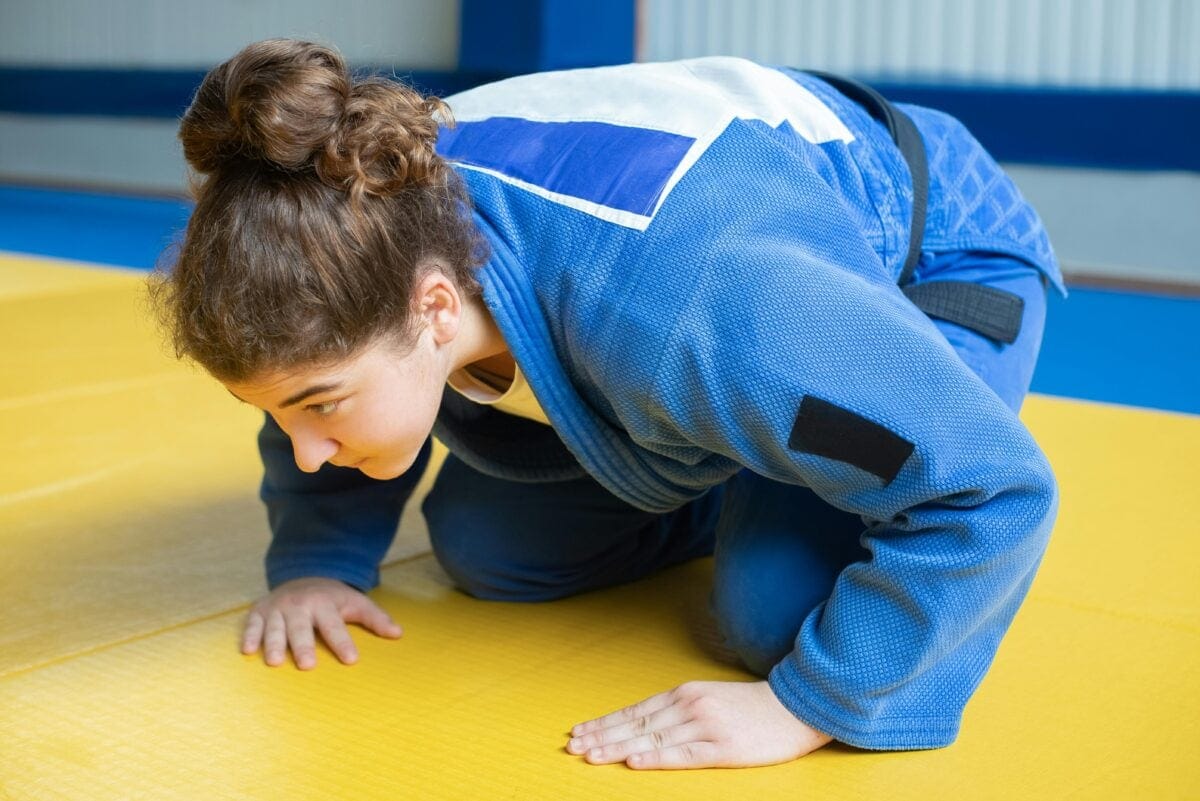
Source: Kampus Productions
Throughout my training in the Far East, I observed how deeply ingrained this custom was in everyday life. This cultural practice made its way naturally into martial arts, where it took on additional significance related to safety and focus. It signifies that both practitioners are mentally present and ready to train with appropriate care for each other's well-being.
Is Bowing a Sign of Weakness or Inner Strength?
One common misconception—particularly among Western beginners—is that this gesture signifies submission or weakness. This couldn't be further from the truth. This practice paradoxically requires and develops inner strength.
When we show respect in this manner, we're demonstrating the confidence to express respect without fear of appearing vulnerable. This takes significant self-assurance—something I've watched develop in countless students, including my own teenage daughters during their year of Brazilian Jiu-Jitsu training.
In Japanese martial arts philosophy, there's a concept called "zanshin" (remaining mind) closely tied to this practice. When performed correctly, the practitioner maintains complete awareness of surroundings while acknowledging another person. Far from vulnerability, it's a state of heightened alertness combined with respect.
As an Aikido instructor, I've observed that students who initially resist this custom often struggle with ego-driven training that impedes their progress. Conversely, those who embrace the humility embodied in the gesture typically advance more rapidly because they remain open to correction and guidance.
This practice teaches us that true strength comes not from dominating others, but from mastering ourselves—our egos, fears, and defensive postures. It creates a training environment where mutual growth takes precedence over individual pride.
Why Do We Bow to the Mat?
Bowing to the training area—the mat, dojo, or academy—might seem peculiar to newcomers. Why do you bow in karate and other martial arts to what appears to be an empty space? This practice carries multiple layers of meaning that enhance our training mindset.
First, the bow to the mat acknowledges the sacred nature of the training space. Throughout my Aikido training and teaching experience, I've emphasized that the dojo is not just a physical location but a sanctuary where transformation occurs. By bowing when entering this space, we mentally transition from everyday concerns to focused training.
Second, this gesture honors all who have trained there before us. In my years at Old City Aikido in Philadelphia, I reminded students that their acknowledgment honored not only O’Sensei but also the lineage of practitioners whose dedication made our training possible. This connects us to the history and tradition of our art.
Third, and perhaps most practically, this pause before stepping onto the mat creates a crucial safety checkpoint. When teaching Aikido classes, I've noticed how this brief moment helps students mentally prepare for training, reducing the likelihood of careless accidents that might occur if someone rushed onto the mat distracted.
Georges St-Pierre, one of MMA's most respected champions known for maintaining traditional values, consistently showed respect before entering the octagon throughout his UFC career, demonstrating that these practices remain relevant even at the highest levels of competitive fighting.
What Are We Really Saying When We Bow to an Opponent?
The pre-sparring or pre-training gesture between martial artists communicates volumes without words. This silent exchange establishes crucial parameters for safe, productive practice.
When bowing to a training partner or opponent, we're essentially saying: "I acknowledge you as a person worthy of respect. I commit to training with appropriate control and care for your wellbeing. I'm mentally present and focused on our mutual growth."
During my years training in Aikido under the masters, I observed how this momentary connection before practice set the tone for the entire training session. Partners who bowed mindfully typically trained with greater awareness and control than those who rushed through the formality.
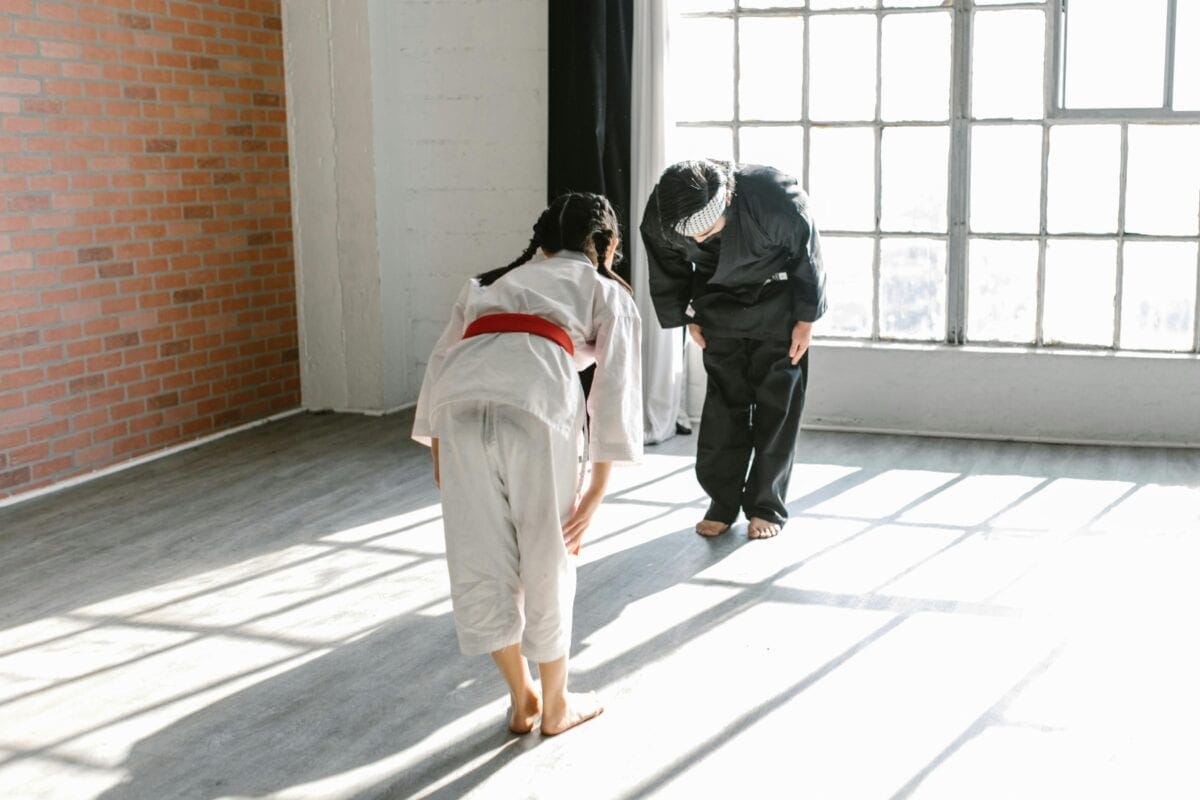
Source: RDNE Stock Project
The bow also serves as an equalizer. Regardless of rank, size, or skill level, all practitioners bow to one another, reinforcing that everyone in the training space has something to teach and something to learn. This creates an environment where mutual respect transcends hierarchical differences.
For competitive practitioners, the pre-match gesture serves an additional purpose—it helps manage adrenaline and focus energy. By engaging in this ritual, fighters center themselves before channeling their aggression, resulting in more technical and controlled performances.
How Many Times Do Martial Artists Bow in a Class or Session?
The frequency of this practice varies considerably across different martial arts styles, but certain patterns remain consistent. Understanding these patterns helps new students navigate dojo etiquette with confidence.
In traditional Japanese martial arts like Aikido, a typical class might include:
- Formal gestures at the beginning and end of class (to the shomen or front of dojo, to the instructor, and sometimes to fellow students)
- Acknowledgments when entering and leaving the training area
- Exchanges of respect before and after practicing with each partner
- Signs of respect before and after demonstrations
This might add up to dozens of bows in a single training session. The frequency reinforces the mindfulness that martial arts seek to develop—each bow is an opportunity to reset focus and intentions.
In contrast, some Brazilian Jiu-Jitsu schools maintain just a few key moments of respect—perhaps at the beginning and end of class, and before sparring rounds. Even with this reduced frequency, the principle remains the same: creating moments of focus throughout training.
What's most important isn't the frequency but the quality of attention brought to each gesture. A single mindful acknowledgment carries more value than numerous perfunctory ones. This quality of attention exemplifies the concept of "mushin" (no-mind)—being fully present in the moment without distraction. The bow to sensei deserves particular care, as it acknowledges both their knowledge and responsibility to transmit the art properly.
What Are the Different Forms of Bowing in Martial Arts?
Many newcomers ask "what is bowing?" before learning its nuances. At its core, it's a physical gesture of respect and mindfulness. The diversity of forms across martial arts reflects the rich cultural traditions from which these arts emerged. Each style carries its own significance and proper execution. Let's explore the different types of bowing practiced in various disciplines.
Standing Bow (Ritsurei)
The standing form is most common in martial arts. In Japanese arts like Karate and Aikido, this involves standing with feet together, hands at sides, and bending at the waist approximately 15-45 degrees depending on the formality of the situation. Many students wonder why people bow in martial arts rather than use Western greetings—the answer lies in the mindfulness and focus it cultivates, qualities essential for effective training.
During my training, I learned that eye contact is maintained during less formal standing bows between partners—this demonstrates the "zanshin" (remaining mind) concept mentioned earlier, where awareness remains acute even during the bow.
Seated Bow (Zarei)
The formal seated bow begins from "seiza"—a kneeling position with the tops of the feet flat on the ground and buttocks resting on the heels. From this position, the practitioner places their hands on the mat before them and bends forward, eyes facing the mat in the most formal situations.
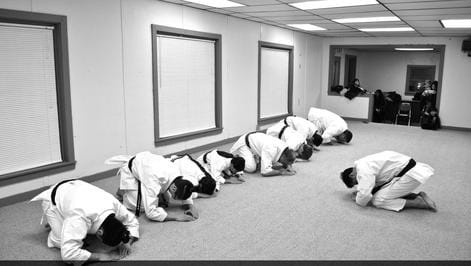
Source: JKA Maine Karate
This bow typically opens and closes formal training sessions. When I taught classes, the seated bow created a clear demarcation between everyday life and focused training time—a ritual that helped students transition mentally into the proper training mindset.
Chinese Martial Arts Bow (Kung Fu Salute)
In Chinese martial arts, the bow often involves the right fist covered by the left palm. This represents the balance of hardness (the fist) and softness (the open hand)—a core philosophical concept in Chinese martial arts.
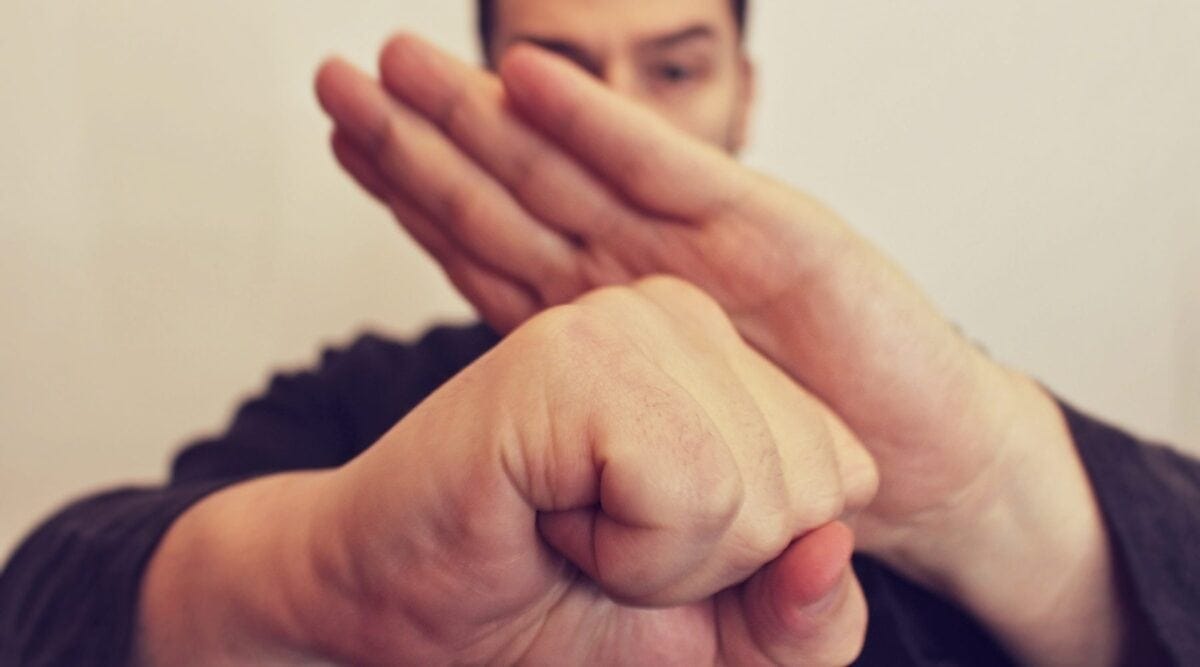
Source: 6 Dragons Kung Fu
Thai Wai
In Muay Thai, the "wai" greeting involves pressing the palms together at chest or face level while slightly bowing the head. This gesture combines respect with the practical function of showing empty hands—a significant detail in a striking art.
Each of these forms serves the same fundamental purpose—establishing respect and setting intentions—while honoring the cultural origins of the respective martial art.
What's the Proper Etiquette for Bowing in the Dojo?
Proper bowing etiquette varies between martial arts styles and individual schools, but certain universal principles apply across traditions. Following these guidelines helps new students integrate smoothly into any martial arts environment.
First, timing matters. These gestures should never be rushed—take a moment to center yourself and be present. During my training in the Far East, I noticed how even the busiest dojos paused completely for these moments of acknowledgment, never treating them as hurried formalities. This deliberate approach distinguishes traditional training from more casual physical activities.
Second, maintain appropriate posture. Whether standing or seated, back straight, shoulders relaxed, and head aligned with the spine demonstrate attentiveness and respect. Throughout my martial arts journey from Isshin Ryu Karate to Aikido, proper form has been consistently emphasized.
Third, match your bow's depth to the situation. Generally, you should bow slightly lower to instructors than to peers, and lower still in formal ceremonies. However, excessively deep bows can appear insincere or theatrical—authenticity matters more than angle.
Fourth, be mindful of cultural context. In Japanese martial arts, bows replace handshakes as greetings and farewells. In my experience teaching Aikido, I found that explaining this cultural context helped Western students understand why multiple bows don't feel redundant in Japanese martial arts.
Finally, follow the lead of senior students when uncertain. Every dojo has slight variations in etiquette, and observing experienced practitioners provides the best guide to local customs. This attentiveness itself demonstrates the respect that bowing symbolizes.
What's the Difference Between a Formal and Informal Bow?
The distinction between formal and informal bows provides martial artists with a flexible language of respect appropriate to different situations. Understanding these differences helps practitioners navigate various training contexts with confidence.
Formal bows typically occur at ceremonial moments—the beginning and end of class, during promotions, or in tournaments. These bows are deeper, slower, and often performed from the seated seiza position. At Old City Aikido, formal bows included specific attention to proper hand placement and precise timing synchronized with the entire class.
Informal bows occur during regular training interactions—before practicing with a partner, when receiving instruction, or when entering the training space. These are usually standing bows (ritsurei), slightly shallower, and more briefly held. They maintain the essential respect while adapting to the practical flow of training.
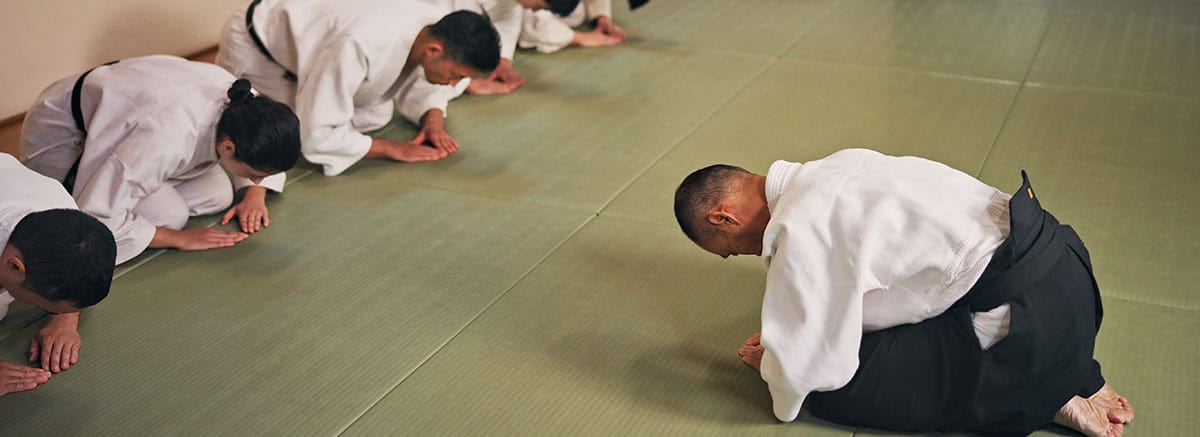
The key difference lies not just in physical execution but in mental approach. Formal gestures serve as significant transitions—from everyday life to training mindset, from one rank to another, or from practice to application. Informal acknowledgments maintain continuity and respect throughout the training session. When students ask what does bowing mean in different contexts, I explain that the meaning shifts slightly with each situation while maintaining its core essence of respect and mindfulness. training mindset, from one rank to another, or from practice to application. Informal acknowledgments maintain continuity and respect throughout the training session. When students ask about the significance in different contexts, I explain that the meaning shifts slightly with each situation while maintaining its core essence of respect and mindfulness.
In informal contexts, you might see a simple nod of acknowledgment between practitioners, while formal settings call for a precise, deeper gesture from seiza position. This subtle variation in the martial art bow reflects its adaptability to different training environments.
Can the Bow Extend Beyond the Dojo?
The mindset embodied in this ritual can profoundly influence how practitioners interact with the world beyond training. This extension represents one of the most valuable aspects of martial arts—its application to everyday life.
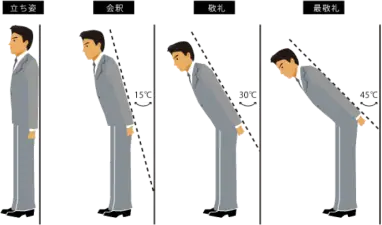
Source: nippaku.wordpress.com
Throughout my decades of practice, I've witnessed how the humility, respect, and mindfulness cultivated gradually permeates students' broader behavior. The gesture becomes not just something we do, but reflects who we are becoming. In professional settings, former students report that the mental clarity and presence cultivated helps them remain composed during challenging interactions. They learn to acknowledge others fully before engaging—a valuable skill in any human exchange.
The physical act may not be appropriate in all cultural contexts, but its underlying principles—respect, full attention, acknowledgment of mutual humanity—translate universally. This represents the true aim of martial arts: not just better fighters, but better people.
Georges St-Pierre, widely considered one of the greatest MMA fighters of all time, consistently demonstrated this extension of martial arts values beyond competition. His respectful conduct in victory and defeat exemplified how traditional values integrate with modern contexts.
Final Thoughts on the Purpose of Bowing in Martial Arts
The martial arts bow, simple yet profound, encapsulates the essence of what makes martial arts unique among physical disciplines. A common question I hear is "why do people bow?" The answer is multifaceted: it establishes respect, develops mindfulness, acknowledges lineage, and creates safety. Far more than combat training, martial arts offer a holistic path to personal development—and this gesture stands as its most visible symbol.
The bow teaches us paradoxical truths: that respect empowers rather than diminishes; that formality can lead to greater spontaneity; that acknowledging another's worth enhances our own. These lessons extend far beyond technical proficiency, shaping character in ways that last a lifetime.
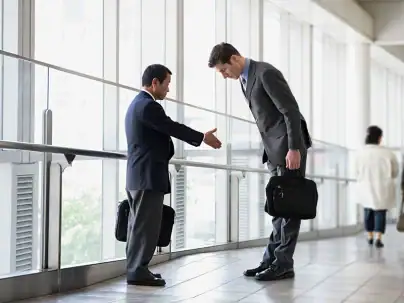
Source: Ippoipposteps.com
For parents considering martial arts training for their children, understand that the discipline of bowing represents one of the most valuable aspects of their education—fostering respect, focus, and humility that will serve them in all life's endeavors.
For adults beginning their martial arts journey, approach the bow not as an empty ritual but as a powerful tool for mental transformation. The mindfulness cultivated in proper bowing directly enhances technical learning while developing qualities valuable in every aspect of life.
The martial arts bow reminds us that true mastery involves not just physical technique but the integration of mind, body, and spirit. In this age of distraction and division, perhaps we need this ancient practice of mindful respect more than ever.
What has been your experience with martial arts training? Are you considering starting a martial art, or have you already begun your journey? Share your thoughts and questions in the comments below!
Frequently Asked Questions
Is bowing in martial arts a sin?
No, bowing in martial arts is not a sin. The bow in martial arts represents respect and acknowledgment, not worship. Many Christian martial artists understand that the intent behind the bow matters more than the physical action. The practice has cultural, not religious, significance.
What do you say when you bow in karate?
In many karate schools, students say "Osu" (pronounced "oss") when bowing. This expression has multiple interpretations including "I understand," "I acknowledge," or "with persevering spirit." Some schools use "Hai" (yes) or remain silent during the bow, focusing on the mindful physical action.








